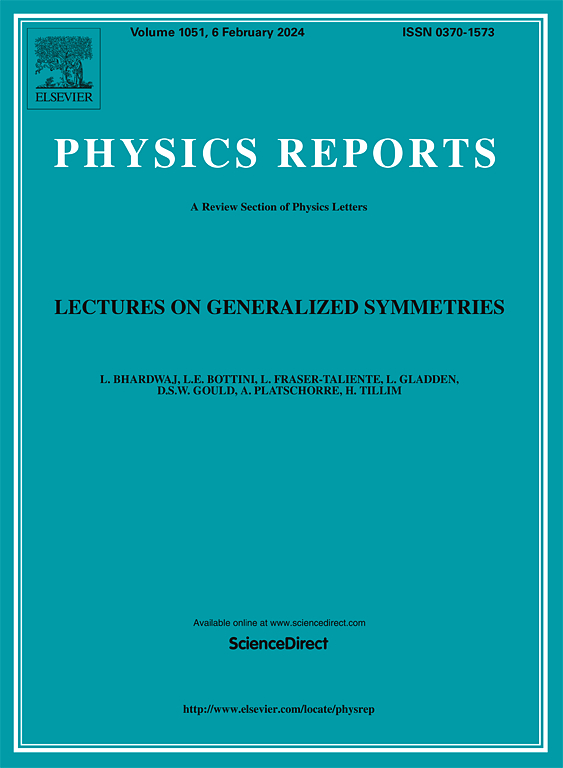Topological foundations of ferroelectricity
IF 29.5
1区 物理与天体物理
Q1 PHYSICS, MULTIDISCIPLINARY
引用次数: 0
Abstract
The 21st century has witnessed a revolutionary shift in the understanding of properties of matter driven by the application of topological principles. While the traditional approach to material science has been focusing on local interactions, topology introduces a global, non-local description in which the geometry of a material profoundly influences its properties. Ferroelectric materials, with their spontaneous electric polarization, have long been essential for understanding fundamental physical phenomena, which have led to numerous practical applications. Recent discoveries have revealed that nanostructured ferroelectrics host a wealth of fundamental topological states, which effectively enrich the landscape of ferroelectric research. This Review explores the topological foundation of ferroelectricity, rooted in the electrostatic essence of these materials. Drawing upon the analogy between the hydrodynamics of incompressible fluids and the electrostatics of polarization fields, we establish a comprehensive framework for classifying the complex topological states observed in ferroelectrics. We demonstrate that the rich diversity of polarization structures can be exhaustively described using the advanced topological approach. By extending fundamental topological concepts such as helicity, fibration, foliation, and ergodicity, we offer a systematic analysis of the topological textures in ferroelectrics. This work provides a coherent framework for understanding and manipulating topological structures in nanostructured ferroelectrics, paving the way for innovations in materials science and technology.
铁电性的拓扑基础
21世纪,拓扑学原理的应用推动了对物质性质的理解发生了革命性的转变。虽然材料科学的传统方法一直专注于局部相互作用,但拓扑学引入了一种全局的、非局部的描述,在这种描述中,材料的几何形状会深刻地影响其性质。铁电材料具有自发电极化,长期以来一直是理解基本物理现象的必要条件,这导致了许多实际应用。最近的发现表明,纳米结构的铁电体具有丰富的基本拓扑状态,这有效地丰富了铁电研究的领域。本综述探讨了铁电的拓扑基础,植根于这些材料的静电本质。利用不可压缩流体的流体力学与极化场的静电学之间的类比,我们建立了一个综合的框架来分类铁电体中观察到的复杂拓扑状态。我们证明了极化结构的丰富多样性可以用先进的拓扑方法详尽地描述。通过扩展基本的拓扑概念,如螺旋、纤维化、叶理和遍历性,我们提供了铁电体拓扑织构的系统分析。这项工作为理解和操纵纳米结构铁电体的拓扑结构提供了一个连贯的框架,为材料科学和技术的创新铺平了道路。
本文章由计算机程序翻译,如有差异,请以英文原文为准。
求助全文
约1分钟内获得全文
求助全文
来源期刊

Physics Reports
物理-物理:综合
CiteScore
56.10
自引率
0.70%
发文量
102
审稿时长
9.1 weeks
期刊介绍:
Physics Reports keeps the active physicist up-to-date on developments in a wide range of topics by publishing timely reviews which are more extensive than just literature surveys but normally less than a full monograph. Each report deals with one specific subject and is generally published in a separate volume. These reviews are specialist in nature but contain enough introductory material to make the main points intelligible to a non-specialist. The reader will not only be able to distinguish important developments and trends in physics but will also find a sufficient number of references to the original literature.
 求助内容:
求助内容: 应助结果提醒方式:
应助结果提醒方式:


